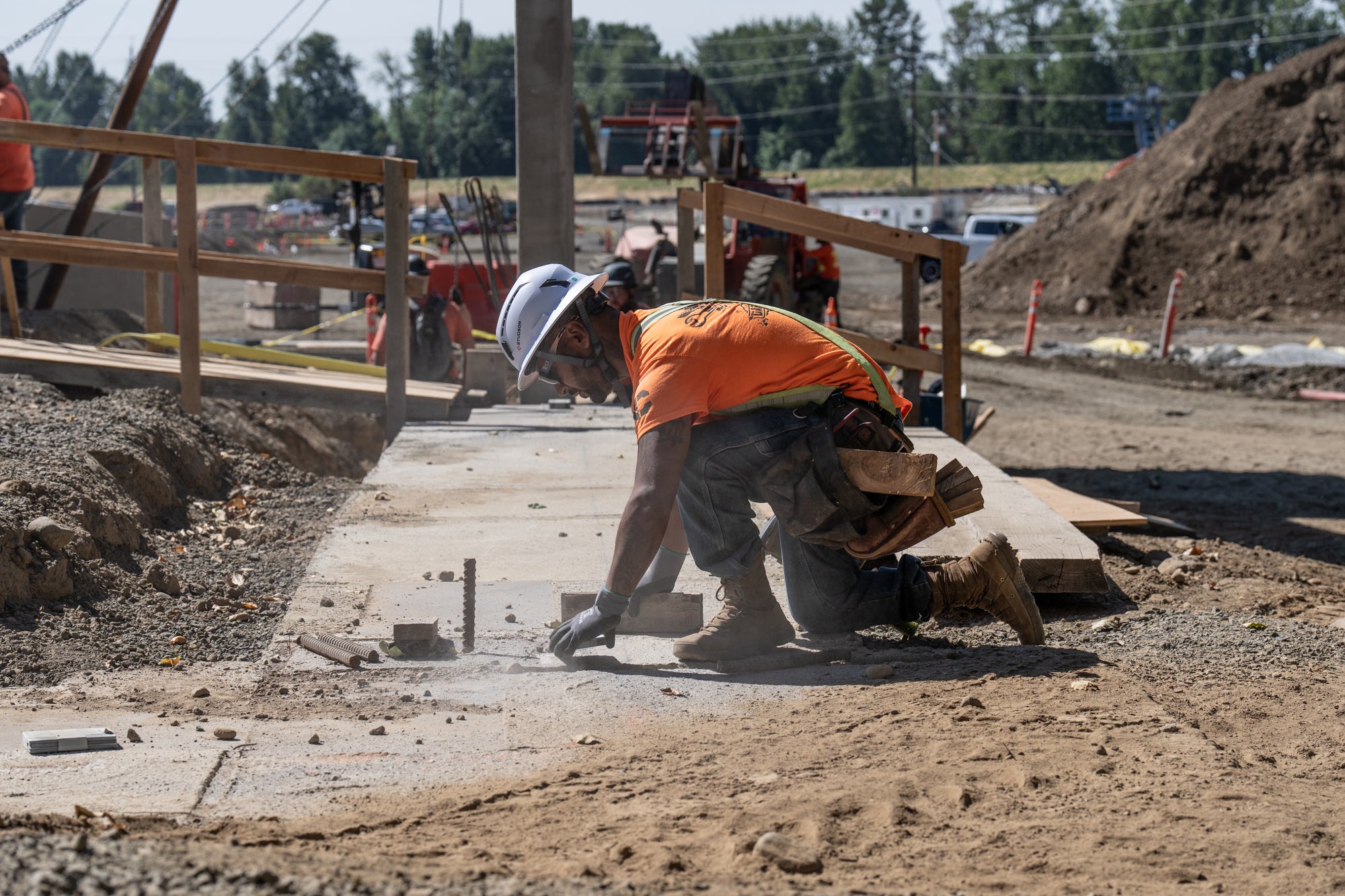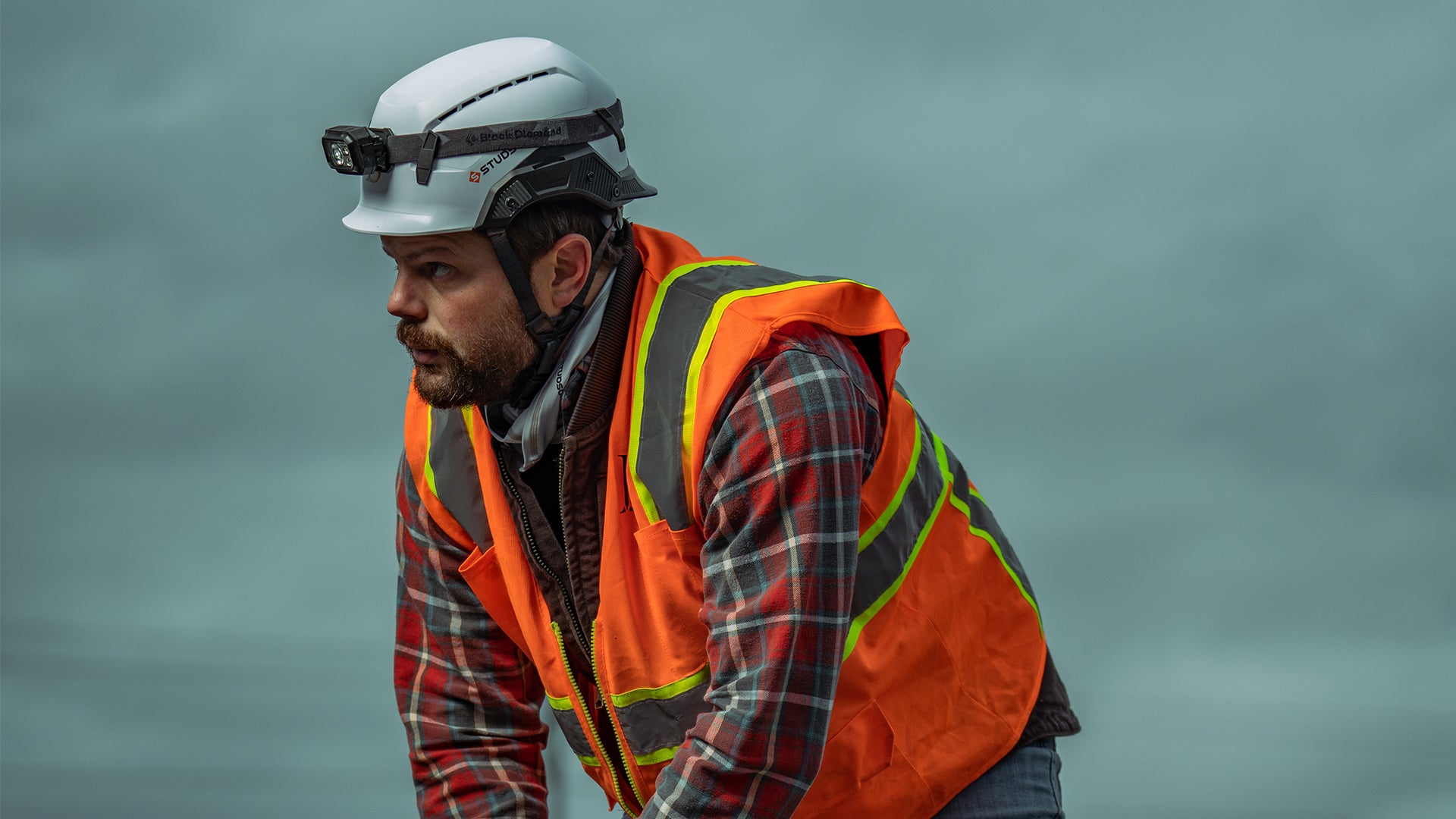
When asked to picture a construction or industrial site, a few things come to mind: cranes, scaffolding, hi-vis clothing, work boots and, of course, hard hats. Hard hats are worn principally for safety, but across its 100-plus-year history, the hard hat has come to mean so much more. It often serves as a symbol and identity piece for workers who put their bodies on the line every day on the job, for themselves, their employers and their families. Workers will often customize their hard hats with stickers to demonstrate their values, their interests and their place on the job site. But when it comes to protection, what does a hard hat actually symbolize?
The truth is the traditional hard hat is no longer the safest way to protect the brain and head on the job. Hard hat technology has remained practically unchanged for more than 100 years, with little innovation beyond the material of the shell. Principally, traditional hard hats can only protect individuals from falling objects, which now constitutes a significantly smaller percentage of actual workplace incidents compared to trips, slips and falls. According to the U.S. Bureau of Labor Statistics, falls, slips and trips were the leading cause of fatalities in the construction industry, accounting for 37.9 percent of all fatalities from 2015-2019. In comparison, deaths from falling objects represented just 16.7 percent of cases.
As a result, the industry is looking at new technologies and designs that can provide full, 360-degree head protection to account for falls, trips and slips along with falling objects.
The Helmet Overhaul: Introducing Type II Safety Helmets
During the past few years, industry leaders have begun taking a hard look at the industrial hard hat market. In response to the 1,008 fatal falls in the United States construction industry in 2020 alone, documented by BLS, construction safety officers, plant operators and more have started to transition to the newest approach to head protection: Type II safety helmets.
Known as the American National Standard for Industrial Head Protection ANSI Z89.1 Type II safety helmet, this new Type ensures comprehensive impact protection for the entire head, including front, back, sides and top. Often, Type II helmets include additional features not found on traditional Type I hard hats, such as chin straps, new Types of impact protection technologies and enhanced incident protection in the form of near-field communication (NFC) chips that digitally transfer vital user medical data to medical personnel in the event of an accident.
It is also important to consider the other key advantages of Type II safety helmets:
• Durability. Well-designed and robust structures enhance the longevity of safety helmets, diminishing the necessity for frequent PPE replacement.
• Financial advantages. A decline in injuries results in fewer worker compensation claims, potentially leading to significant cost savings for organizations.
• Diminished liability insurance expenses. Reducing injuries may contribute to lower liability insurance costs for businesses.
• Risk mitigation. Adopting Type II safety helmets promotes a safety-oriented culture on the job site, contributing to an overall decrease in workplace hazards.
• Productivity. With a decrease in injuries, workers can allocate more time to tasks on the job site and less time to recovery, potentially elevating productivity and earnings.
However, despite the numerous safety advantages of Type II style helmets, with change comes resistance, especially from those workers who have worn traditional hard hats for decades without incident.
What Does a Hard Hat Symbolize?
There’s no question that workers feel immense pride in wearing a traditional hard hat. For many, it’s a symbol of the hard work they’ve put into their trade, it represents the changing of roles as they evolve in their career, and even gives workers a sense of pride when wearing it. In a way, it’s an unspoken advertisement for the individual. With such pride also comes attachment to the style.
When Type II helmets first hit the market, all offerings were modeled after a climbing-style helmet. While the Type II style safety helmet is demonstrably safer, it lacks the traditional brim that is symbolic of the hard work the industry performs every day. Many industrial workers, especially those working in civil, oil and gas, or utilities, were not willing to give that up. Beyond the aesthetic style, many also desire the added protection from the elements that a brimmed helmet provides.
In response, the PPE industry is introducing new versions with the more traditional full-brim look they are familiar with, but packed with all the technological innovations that make Type II helmets significantly safer.
A Pivot in PPE
Now Type II safety helmets have evolved to balance the safety needs of the industry and the style and comfort the wearers crave. Full-brim options maintain the familiar silhouette while providing better protection. That one aesthetic tweak has made a world of difference in shifting the wearer’s perspective, empowering them to adopt a Type II helmet.
It also helps that these helmets offer increased impact protection via incorporated technologies. That includes welded-tube polymers such as from Koroyd, and NFC technology, from TwiceMe, that replaces the traditional medical information paper scrap that workers would stuff into the side of their respective hard hats. And much like an action sports helmet, these new generation Type II safety helmets feature replaceable pad sets that are both more comfortable and washable, offering a more hygienic experience.
Although many organizations are mandating Type II helmets for all their respective commercial and industrial job sites, it’s important to get employees excited about transitioning. A full-brim style, but with Type II protection, provides the critical compromise for mass adoption.
This article originally appeared in the February/March 2024 issue of Occupational Health & Safety.


